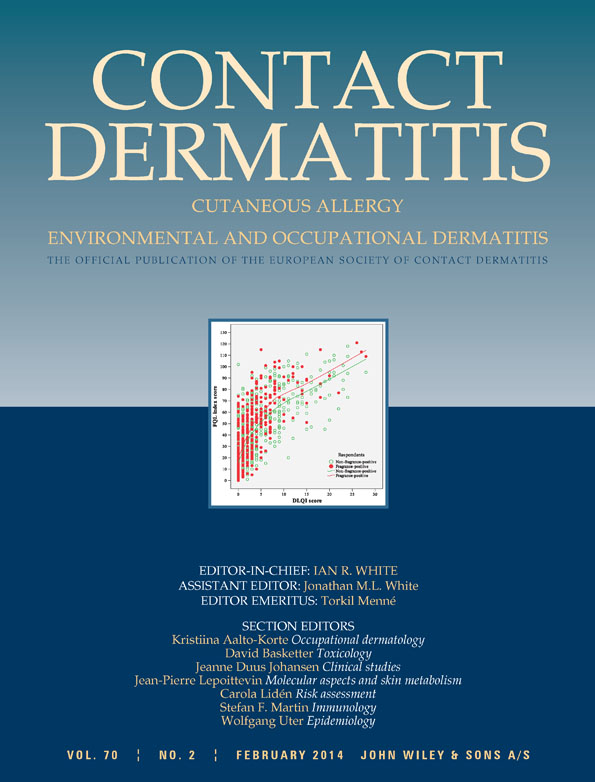Topical botanically derived products: use, skin reactions, and usefulness of patch tests. A multicentre Italian study
Summary
Background
The evidence on the safety of topical preparations containing botanical extracts is limited.
Objectives
To assess (i) the use of botanically derived compounds in a large population, (ii) the incidence of cutaneous side-effects, and (iii) the diagnostic usefulness of patch testing.
Methods
A questionnaire was used in 2661 patients to assess both the prevalence and type of topical botanical preparations used, and the occurrence of adverse skin reactions. Patients declaring adverse reactions were patch tested with (i) the Italian (SIDAPA) baseline series, (ii) an additional botanical series, and (iii) the patients' own products.
Results
Of the patients, 1274 (48%) reported the use of topical botanical products; 139 patients (11%) commented on adverse cutaneous reactions; 75 (54%) showed positive reactions with the Italian baseline series. Among the 122 patients tested with the botanical series, 19 (16%) showed positive reactions, in many cases with concomitant relevant positivity to at least one allergen of the Italian series connected with cosmetics. The commonest botanically derived allergens were propolis, Compositae extracts, and Melaleuca alternifolia (tea tree) oil.
Conclusions
Contact allergy is a possible adverse effect of natural products. Baseline series supplemented with the commonest botanical allergens may be adequate for detecting most of the cases of contact allergy to natural topical products.




